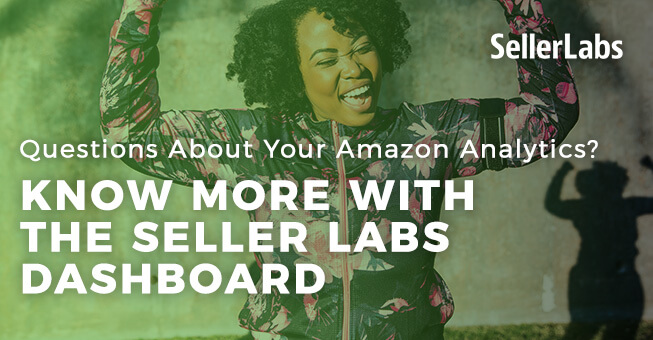Questions About Your Amazon Analytics? Know More with the Seller Labs Dashboard

Did you enjoy our big reveal? I hope you read Katie’s blog when we announced the new dashboard. We’ve been working hard to give you better information and insights into your Amazon business and we’re not stopping there. There’s much more to come!
But since we released the dashboard, we’ve been hearing great feedback from you. And frankly, you’ve also had some great questions. So I’m excited to share answers to some of these questions with you here.
How does the dashboard calculate fees?
Amazon’s fee structure – as you probably know – is incredibly complex. Today, we don’t calculate fees in the dashboard, but we will in the future and will share more details when we implement it. However, you can see Amazon fees in Quantify today on your product details or in the Financial report. Not using Quantify? Sign up for Pro and get access to Quantify plus all of our other Seller Labs products.
How does the Cost of Goods Sold (COGS) come into play?
Like fees, in this first version of the dashboard, we’re not calculating COGS. But, also like fees, you can see the full financial picture by using Quantify, which makes it easy to upload COGS for all of your products and understand how it affects your net profit.
How is Average Order Value (AOV) calculated in the dashboard?
Average Order Value is a simple calculation. It’s the total income minus shipping costs divided by the number of orders in a given period. The income value itself does not include shipping and taxes. An order may include multiple items which is why your average order value may not look like the average sale price of any one of your products. Shipping and taxes are not included in the value for income.
Why is this an important metric? Monitoring AOV helps you measure the long-term value of individual customers. If you want to increase profits, it’s worth considering how you could price to increase AOV. Since there are costs associated with each order, increasing your AOV is a way to drive direct revenue and increase your profits, instead of spending more on advertising to increase traffic. Bundling and testing price increases are ways to increase AOV to see how your buyers react.
Why don’t my values match Seller Central?
This is naturally the most common question we hear. If your dashboard numbers don’t match up with Seller Central, there are a number of reasons why this happens. Here are the most common reasons why you’ll see different numbers:
- Since the dashboard is most valuable as a trend analysis, the Seller Labs Dashboard isn’t displaying data in real-time. It won’t include transactions from “Today” on it, so focus on the trends that you see visualized to understand buying cycles and overall performance.
- Amazon seeks to paint the most positive picture so Seller Central shows every order immediately. The Seller Labs Dashboard displays cleared transactions in the dashboard at this time.
What’s coming next?
We’ve got so much planned for the dashboard, and we can’t wait to share it with you! Expect to see more new data coming for your products. Got an idea? Reach out to Customer Success and share it!
Can’t wait for the future to get more insights? Get access to deeper data now with Quantify with a Pro subscription.

Lauren is our tech Product Manager at Seller Labs. Our Chief Problem Solver. In her free time, when she's not taking care of our customers needs, she's enjoying the great outdoors - gardening and gathering fresh eggs from her 7 chickens!






